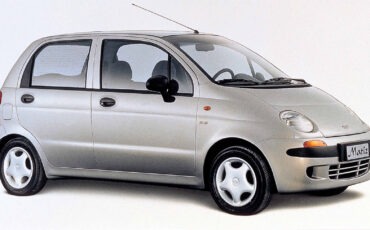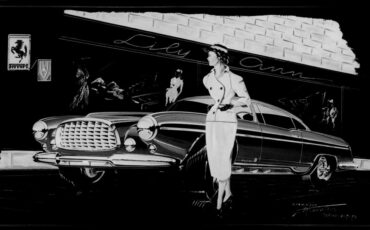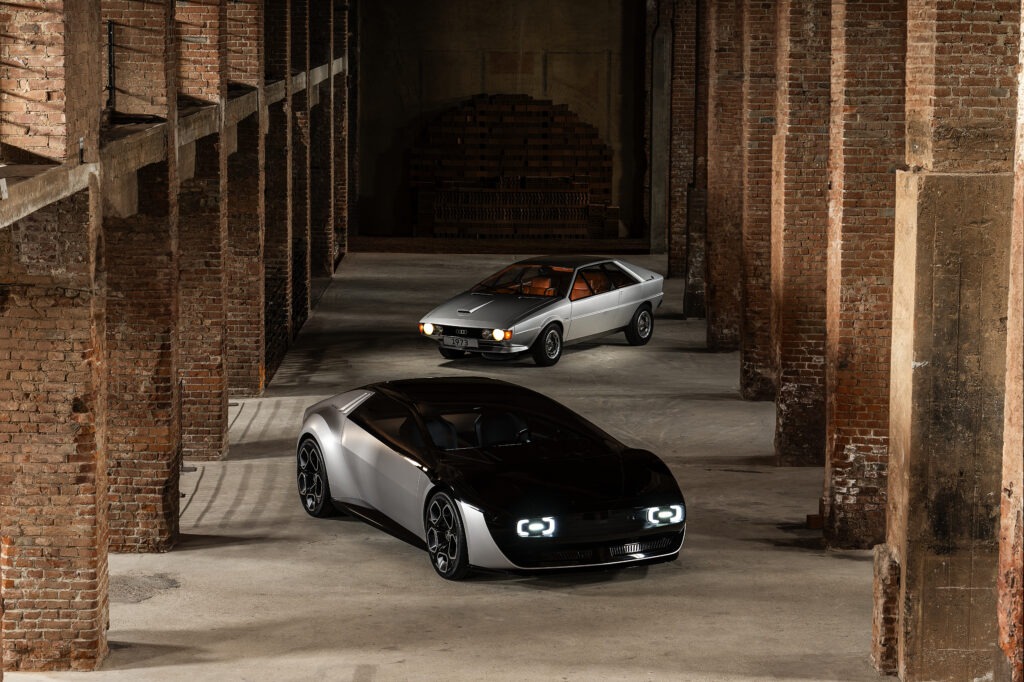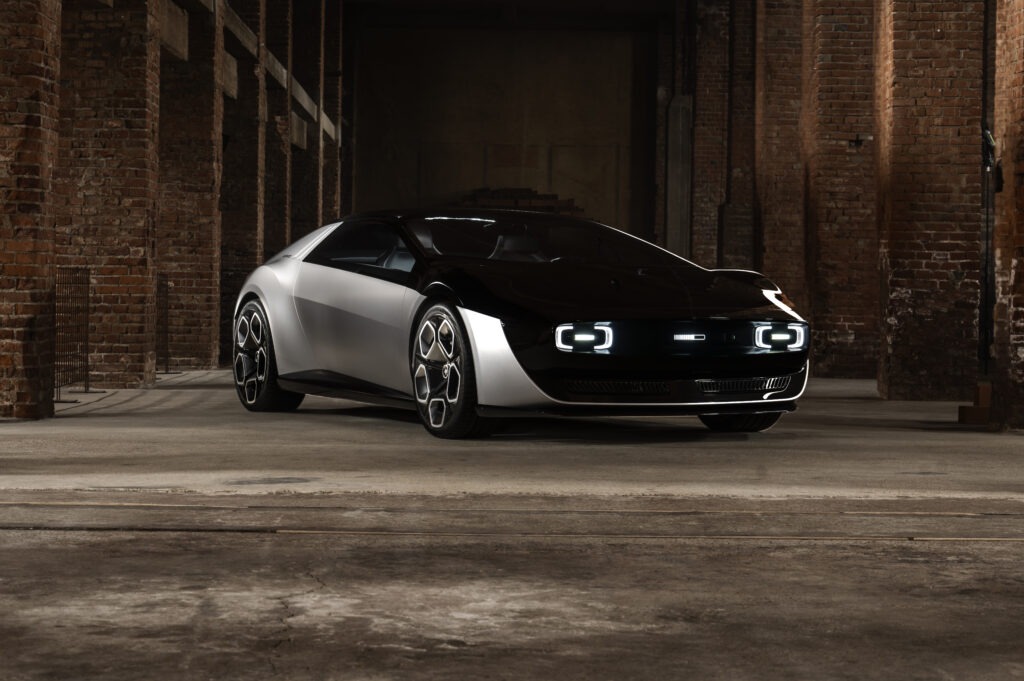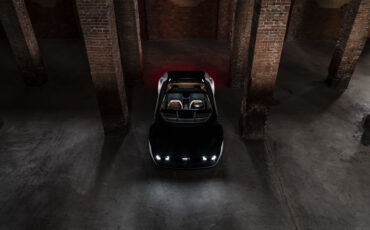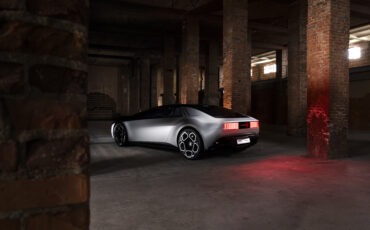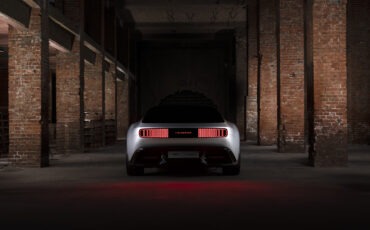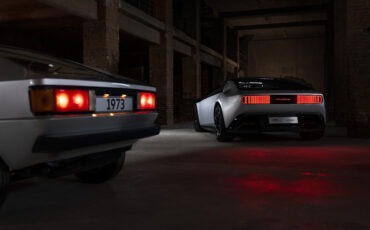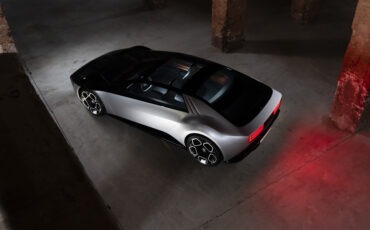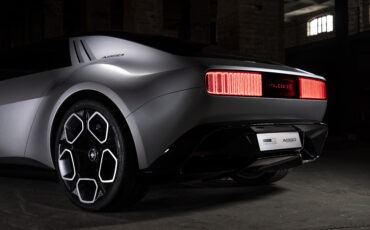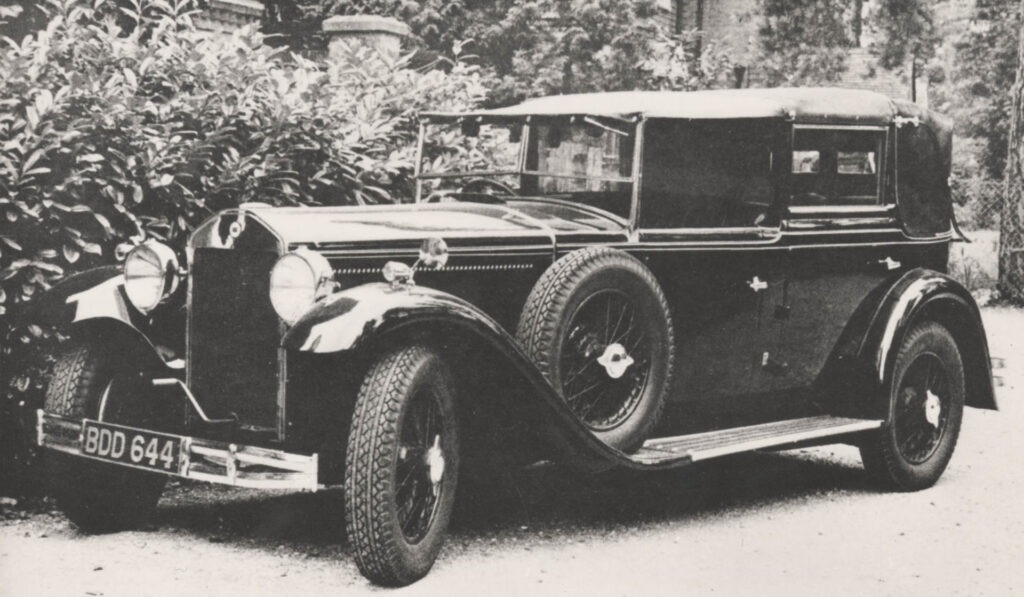
Vincenzo Lancia’s experience with the Lambda made clear that the time was not yet ripe for the production of a car with the so called “ponton” bodywork, especially for a manufacturer aiming to attract a selected clientele. The needs of the wealthiest Lancia customers could certainly not be satisfied with a creation so difficult to customize. The solution to this problem was identified for the eighth series of the Lambda and for the subsequent Dilambda, Artena and Astura. By adopting chassis consisting of closed section beams with high torsional stiffness, good performance could also be achieved with non-structural bodies, thus reconciling two apparently opposing needs, that of obtaining quiet cars characterized by precise driving, on the one hand, customizable body shapes, albeit with reasonably limited investments by the coachbuilders.
Later, from the Augusta to the Appia, all returned to the body-chassis, the problem was solved by designing structural skin for the internal series production models, but conceived with the expedient of making them easily transformable into “platform” chassis, built on the floor with the addition of a few reinforcing elements. These frames could also be mechanized ready to be then supplied to the various external coachbuilders for completion.
It can be said that Lancia, took into great consideration the opportunity offered by the contribution of external coachbuilders for the development of the image of its product. Nevertheless, refined forms were rarely adopted, and a body style characterized by an almost minimalist sobriety and simplicity, always endowed with great elegance, was preferred. As has already been noted, even a sports model, or one with utilitarian characteristics, could have been appropriate for official occasions. It is therefore logical that Lancia was inclined to create a preferential relationship with the coachbuilder who better than all the others knew how to interpret the inspiring principles of the brand. This type of close collaboration was established, through everyday activities and on a personal level, between Vincenzo Lancia and Battista Farina, nicknamed “Pinin”, Giovanni’s younger brother, owner of the Stabilimenti Farina, founded in 1919, to which he had been given the opportunity to dress many Lambda and Dilambda.
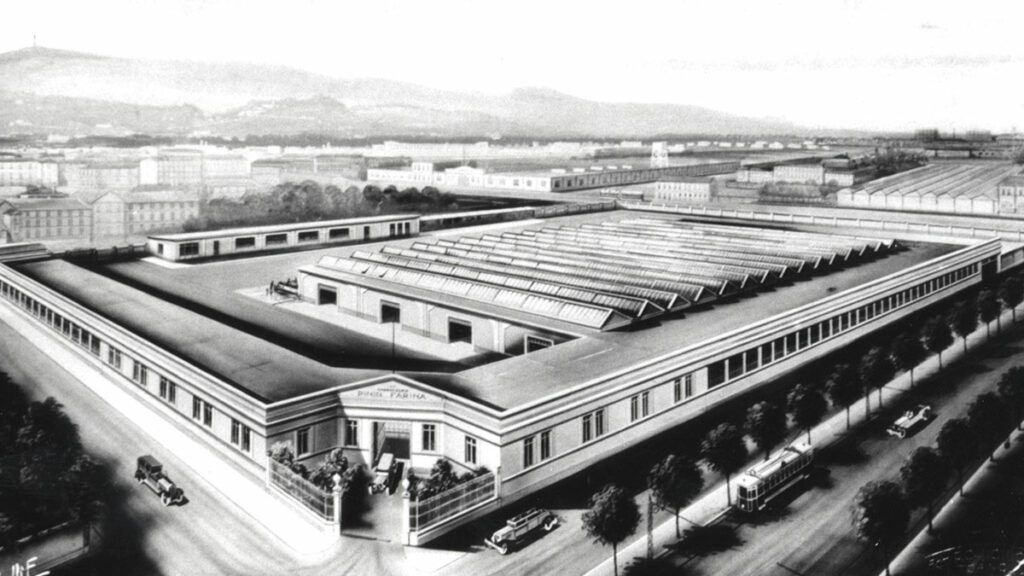
Lancia was able to appreciate Pinin Farina’s creativity and skill on several occasions: when he suggested extending the brand’s shield shape also to the Dilambda headlights or when he built a new type of lock that allowed quick opening and closing of the bellows of the convertible versions.
A year after the launch of the Dilambda, Pinin Farina decided to found his own workshop and Vincenzo Lancia supported and encouraged the company, also participating as a minority shareholder. From that moment on, the contribution of Pinin Farina was not limited only to the supply of custom-built bodywork, but also to the contribution of new ideas for the Lancia’s in-house design of the bodies, a kind of inofficial research laboratory. This also thanks to Pinin Farina’s great interest in technological progress and in aviation in particular as Battista dealt with this directly with the construction of airplanes, during the First World War. The experience gained led him to search for aerodynamic shapes also for cars, introducing new concepts in his custom-built models, which assumed a role similar to that which is now played by concept cars, forerunners of series production.
Pinin Farina argued that aerodynamics was the form of speed and the natural expression of movement and, following this thought, he developed, in the years of the Second World War, the concept of thick-wing monolithic bodywork, which materialized in the Cisitalia 202, one of his best achievements, introducing with it a reference archetype for the design of modern Italian bodywork
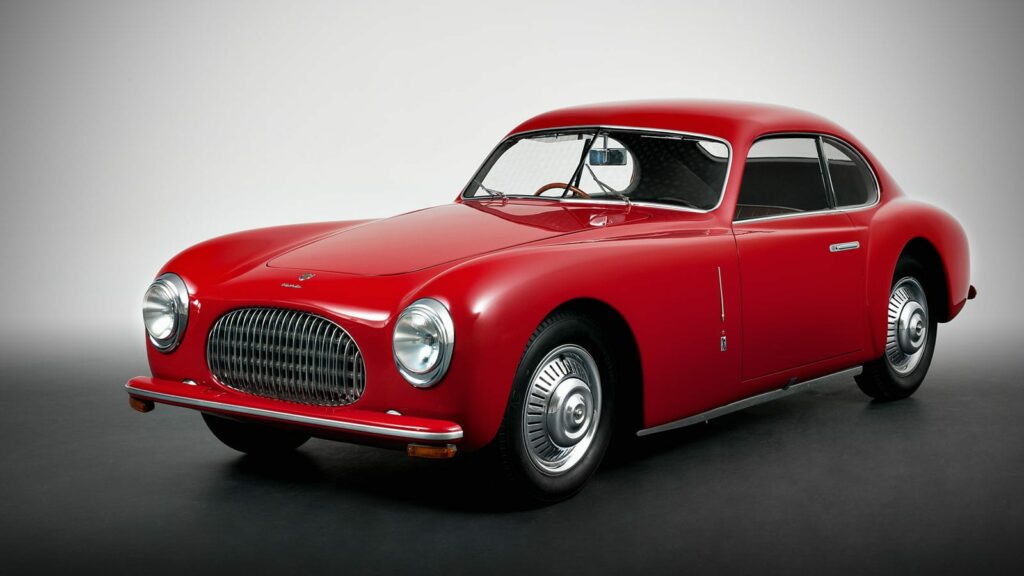
In 1961, the President of the Republic, in consideration of the merits of Pinin Farina and the international recognition obtained, authorized the change of the family surname and the brand in Pininfarina. In the same year Pinin left the management of the company to his son Sergio Pininfarina and to his son-in-law Guido Carli, who continued to play the same role towards Lancia, introducing more scientific bases in the traditional bodywork business, for example by building a new wind tunnel.
Here are some Lancia model which underline the contribution of Pininfarina to the growth of the Lancia brand: in addition to being admired, they can also be seen as illustrations of a concise history of the innovation of car shapes. And the emphasis must be placed on the fact that the times in which these models were developed consistently anticipated their mass diffusion.
An example of Pininfarina’s first creations can be the Cabriolet built in 1930 for the Queen of Romania, on a Dilambda chassis: the shape of this car expresses the characteristics of the Lancia style very well and can be considered a faithful expression of stylistic canons of the time, characterized by perfectly vertical radiator and windshield, mudguards attached to the frame and connected by the dais and sills, rear part truncated vertically.
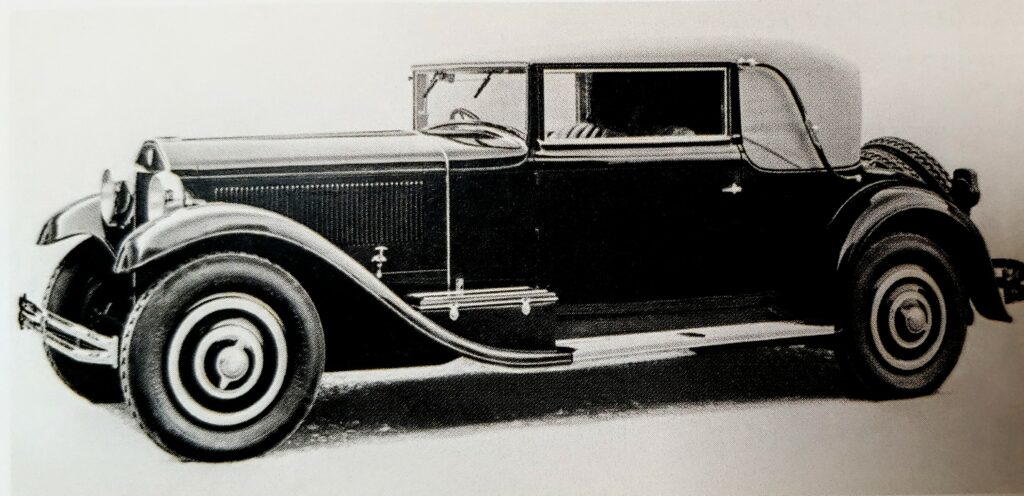
On the other hand, the established practice between manufacturers and coachbuilders did not allow much more: a typical chassis, in its condition of supply to the coachbuilder, included, in addition to the chassis and mechanical parts, a radiator, grille, bonnet, headlamps and flame arrester.
Pictured here is a 1933 Dilambda sedan awarded at the Montecarlo Concours d’Elegance which shows a first evolution towards more streamlined shapes, different from the then widespread style canons: the windshield was shaped with a slight backward inclination, while the front fenders were given a more elongated shape and connected with the step. The rear of this car anticipated, in its form, the creation of the third trunk volume, applied to some of the sedans, later by about five years.
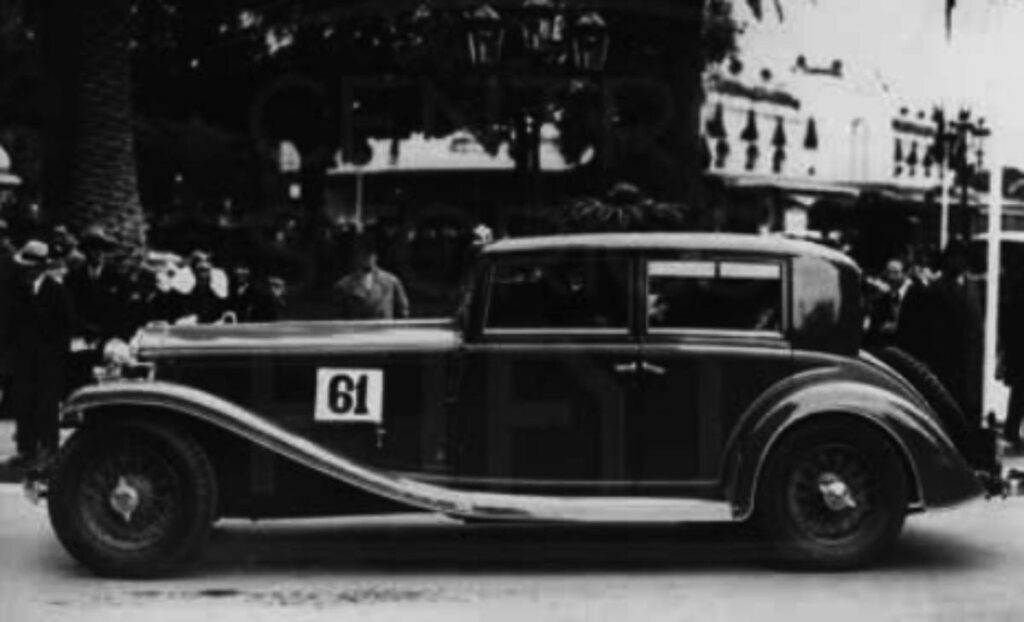
In other models, such as the Bateau, also on the 1932 Dilambda chassis, even more thrilling expressions of aerodynamic shapes were sought, destined, however, to be devoid of practical consequences, such as the teardrop-shaped fenders, of which, the front ones, concealed partially the spare wheels: the Victoria Coupé of 1933, one of the latest creations on the Dilambda chassis which won the Concorso d’Eleganza Nervi, expresses a further development towards more modern forms. The windshield and radiator are tilted back significantly and the rear window also expresses, with an inclination in the opposite direction, a shape more compatible with motion in a fluid. The side windows, now rounded, are perfectly compatible with the curvature of the roof. The spare wheel is faired with a sheet metal cover, to better connect with the elusive shape of the trunk.
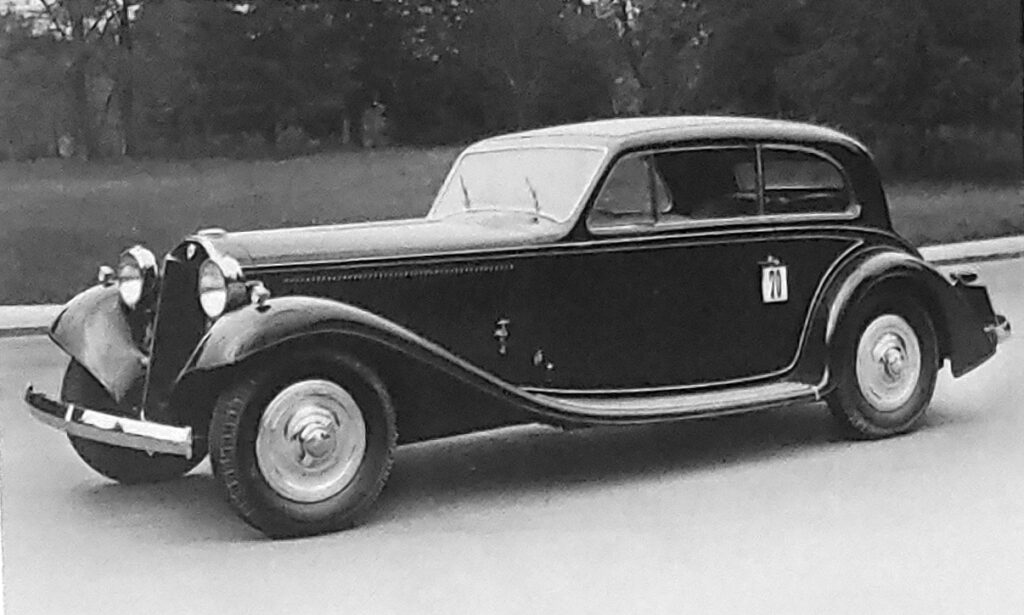
A new step towards more modern shapes, with low aerodynamic resistance, is this Berlina on the Astura chassis of 1934: the sides have now exceeded the width of the profiles of the side members to provide greater roominess and, at the same time, obtain a tapering of the shape also in the sides. Important also the rounded shape of the radiator grille.
However, Lancia production still could not detach itself from the traditional shapes and from the elongated octagon radiator grille, which seemed to have taken on an emblematic value: this Roadster on the Astura chassis from 1935 expresses a shape of compromise between the elements of tradition and the innovative characters sought by Pininfarina, such as the teardrop fenders that blend harmoniously with the shape of the central body, with dihedrals connected by curved surfaces.
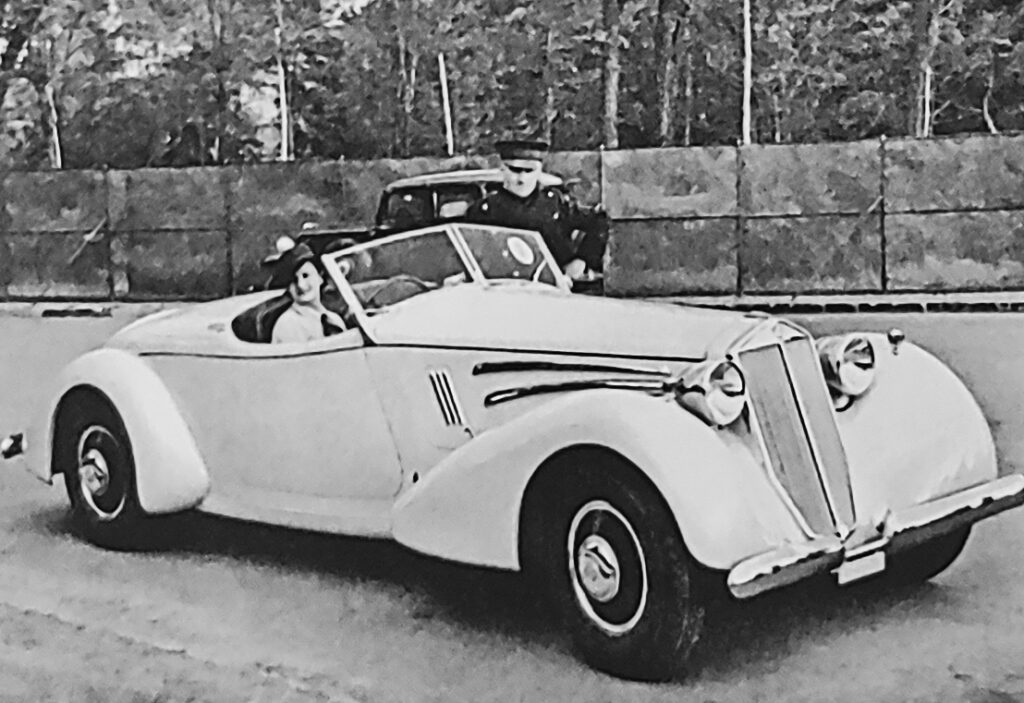
To understand how much Pinin Farina’s design had gone ahead with respect to the Lancia tradition, the ultra-modern 1936 Berlinetta on an Astura chassis can be compared with the angular lines of the in-house sedans. Shapes derived from these proposals were, however, applied later on to the new Aprilia and Ardea. A family of designs, probably not very homogeneous with the Lancia concept, was developed in the late 1930s by Pinin Farina, with similar appearances to those of the 1939 Astura chassis sedan: shapes characterized by the “fronale prua” (windbreak bow), inspired by american car design trend.
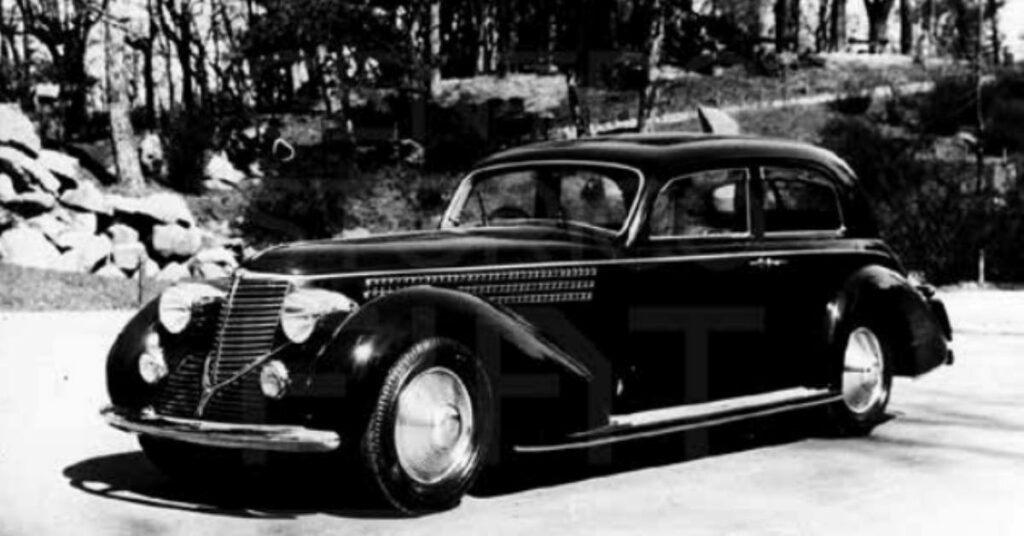
This feature, even if imitated in other Italian and foreign cars, was never adopted in the production Lancias. It should be noted, however, a first transition towards the integral forms accepted later, characterized by a more extensive union of the mudguards with the central part of the bodywork and by a reduction in the dimensions of the steps.
Although the Aprilia and the Ardea had just received his previous style proposals, Pinin Farina was already examining even more advanced perspectives, which helped to define the forms adopted by the Aurelia and the Appia in the 1950s. The most effective expression of the results of these new design researches is the Cabriolet Sport built on a 1938 Aprilia chassis. In this Aprilia, the sides and fenders form a continuous side surface, accentuated by the fairing of the rear wheels. The bodywork is made with a single profiled monolith, in which the headlights have also been partially recessed. The windshield is also suitably dihedral shaped, a prelude to the curved shapes that will be applied as soon as glass technology makes it possible.
The 1947 Bilux Berlina can be considered derived from this style project, now applied in a less extreme way, and represents one of the most beautiful bodies made for Aprilia: in this project, the perfect integration of the typical vertical Lancia grille with the integral shape developed for the Cabriolet Sport. This proposed form will be incorporated in the Aurelia and the Appia. The Bilux, with several variants, was produced in small series, starting a new mission for Pininfarina that will get even greater response in the following years.
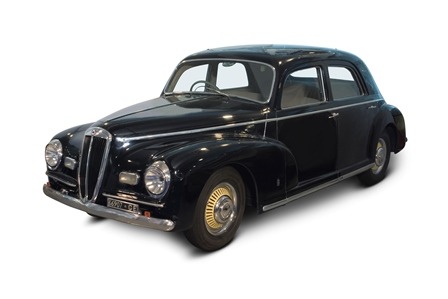
The bodywork proposed for the first Aurelia did not differ much from that adopted for the production Sedan, confirming the difficulty in calling into question a style model of such refined beauty. Below is a revision of the basic project, carried out on an Aurelia B50 chassis: the shape is more slender, almost representing a transition between sedan and coupé, and the thin window frames, made with reported profiles, lighten the basic volume.
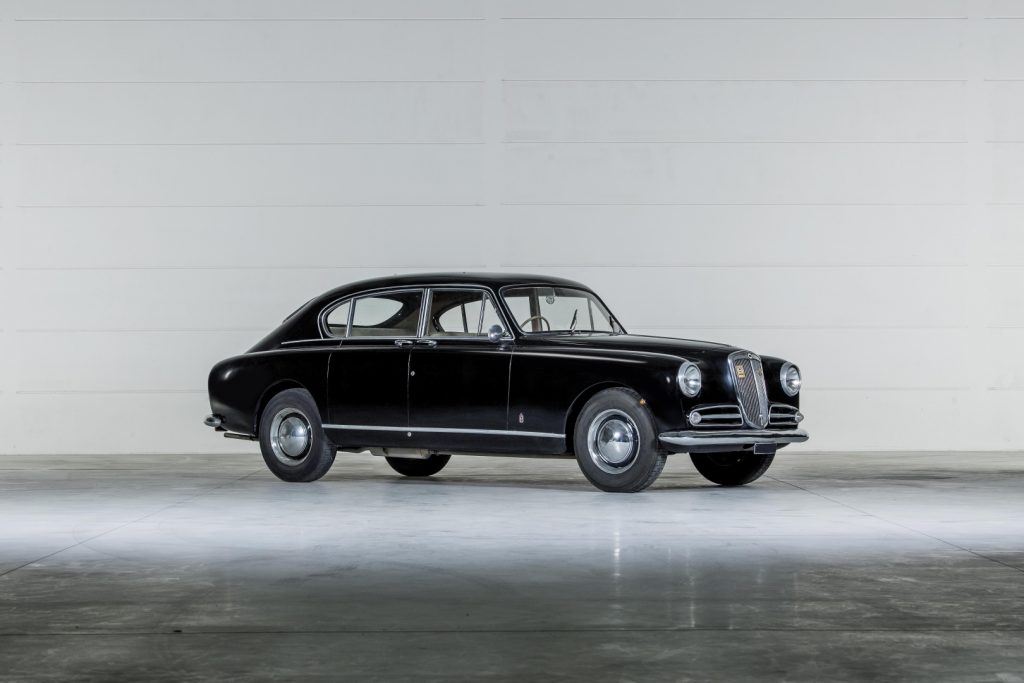
In the following years, a new concept of style was examined, probably inspired by the prototypes of turbine cars, which were in development at Fiat and Rover. The new engine, which was believed to have promising characteristics, spurred the development of shapes inspired by those of the first jet engine aircraft, characterized by circular big air intakes, beaks and rear fins. An example of this concept was the PF200 series on the Aurelia B52 chassis, certainly too daring and difficult to have a production following.
On the other hand, the example offered by the beautiful and famous Spider B24 is more harmonious and with a very different visual impact: the process of evolution and refinement of the lines of the PF200 series, in 1954, to the creation of a prototype from which the 1st series was derived, with the characteristic wrap-around windscreen, the front bumper in two elements, the doors which not allowed descending side windows. From this car derived the Spider II series, equipped with a more conventional windshield, descending side windows and removable hard top.

All these cars were united by the characteristic air intake for the carburetors, located on the engine hood, which for a long time remained a very popular graphic sign to the public.
The Florida Sedan, built on one of the latest Aurelia B56 chassis, presented at various shows between 1955 and 1956, showed features that were breaking with the style of the previous Lancias, giving up the typical vertical front grille. The style of this dream car was a source of inspiration for the new generation of Lancia cars, although some modifications were necessary to make production easier. One of the first prototypes was characterized by the absence of the central pillar and doors with wardrobe opening. In order to fix the door lock, it was necessary to arrange a low height pillar, invisible from the outside: the real purpose of these pillar was cleverly concealed, by applying a grab handle for rear passengers. The second feature of this proposal was given by the new grille, with horizontal development, and by the double headlights. A third element of strong stylistic connotation was the long side perfectly joined, surmounted, in correspondence with the third volume, by a frame, which formed the fins and enveloped the large rear window, highlighted by a two-tone paint.
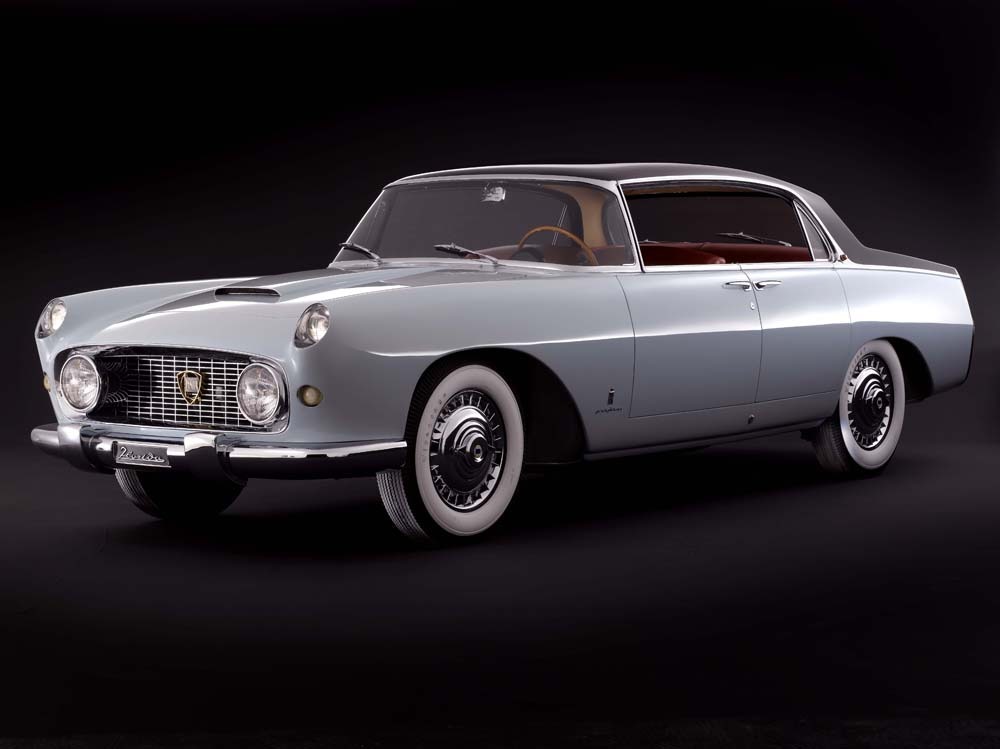
On a prototype closer to the production launch of the Flaminia, which would bring these elements of style into series production, a central pillar was introduced, giving up the elegant, but expensive, side windows. On this occasion the front headlamps of different sizes were also exchanged in their positions.
The new Lancia grille was defined in detail for the special Cabriolet, built on the Aurelia B24 chassis, presented at the 1957 Geneva Motor Show and was also applied to the Appia Coupé, built in small series by Pinin Farina: it became the new family feeling of all later Lancia models.
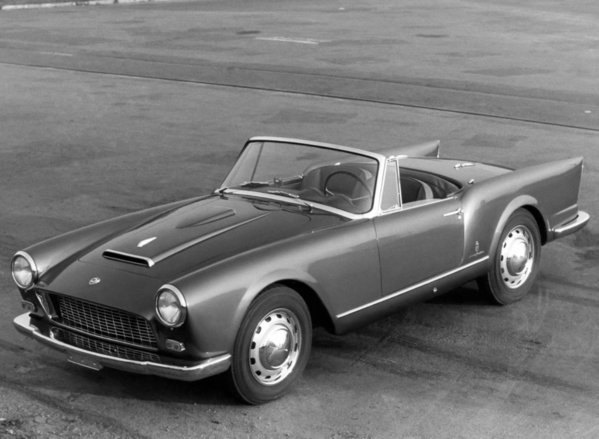
For the Appia, the chassis construction system for Lancia’s coachbuilders was further simplified: in practice it consisted only of the floor of the Sedan, reinforced with removable arches, to make it possible to transport it and subsequent assembly, without the risk of deformation.
With the Beta, this new system was outdated and needed to evolve: for the first time, Pininfarina equipped itself to produce in-house bodies with structural characteristics, thus redefining the division of roles between the coachbuilder and the manufacturer.
According to the new operating scheme, the body-chassis, paneled, painted and finished by Pininfarina, were supplied to Lancia for subsequent mechanization and, in the case of small batches, even mechanized internally. The development and construction activities and the consequent investments thus became more demanding, forcing to consider mainly small series productions. The most important example of this new technology is offered by the Beta Montecarlo, the sports Coupé that shared with the Beta little more than the powertrain, in this case arranged transversely in the central area, with rear wheel traction.
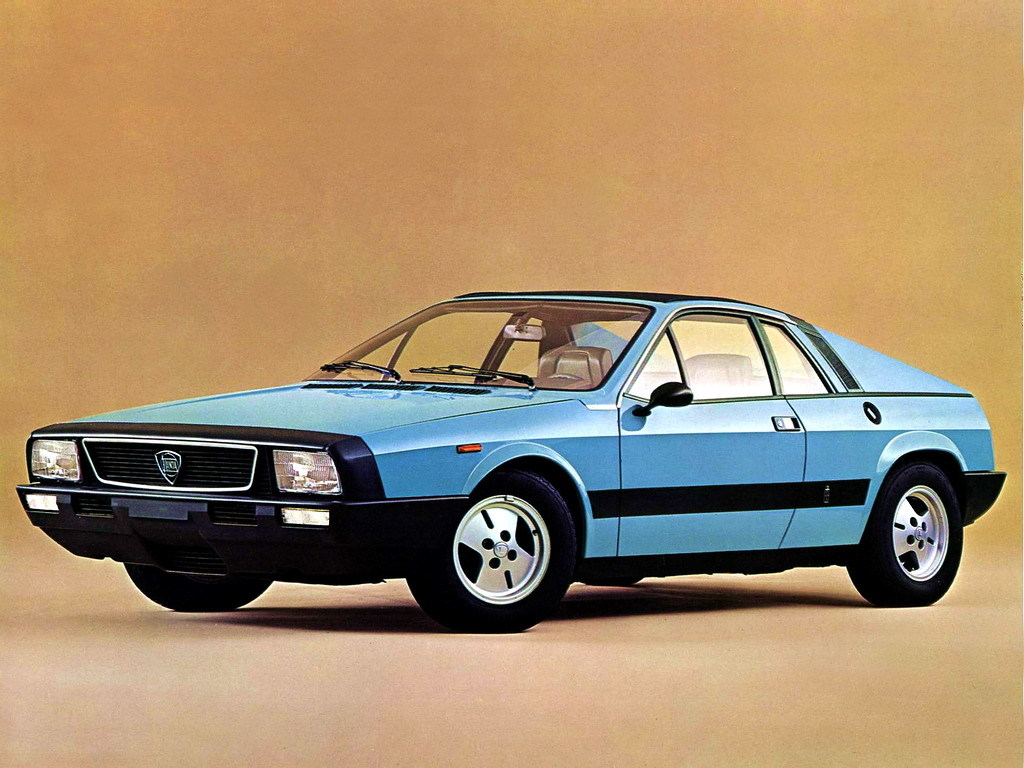
We conclude with the Lancia Gamma Scala, a sedan with homogeneous lines with those of the Coupé, also designed by Pininfarina. Unfortunately, Lancia’s decision to give up the Gamma did not allow this beautiful car to be concretely offered to the market.
Source:
LANCIA – Storie di innovazione tecnologica nelle automobili (Lorenzo Morello)

